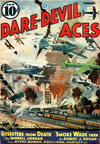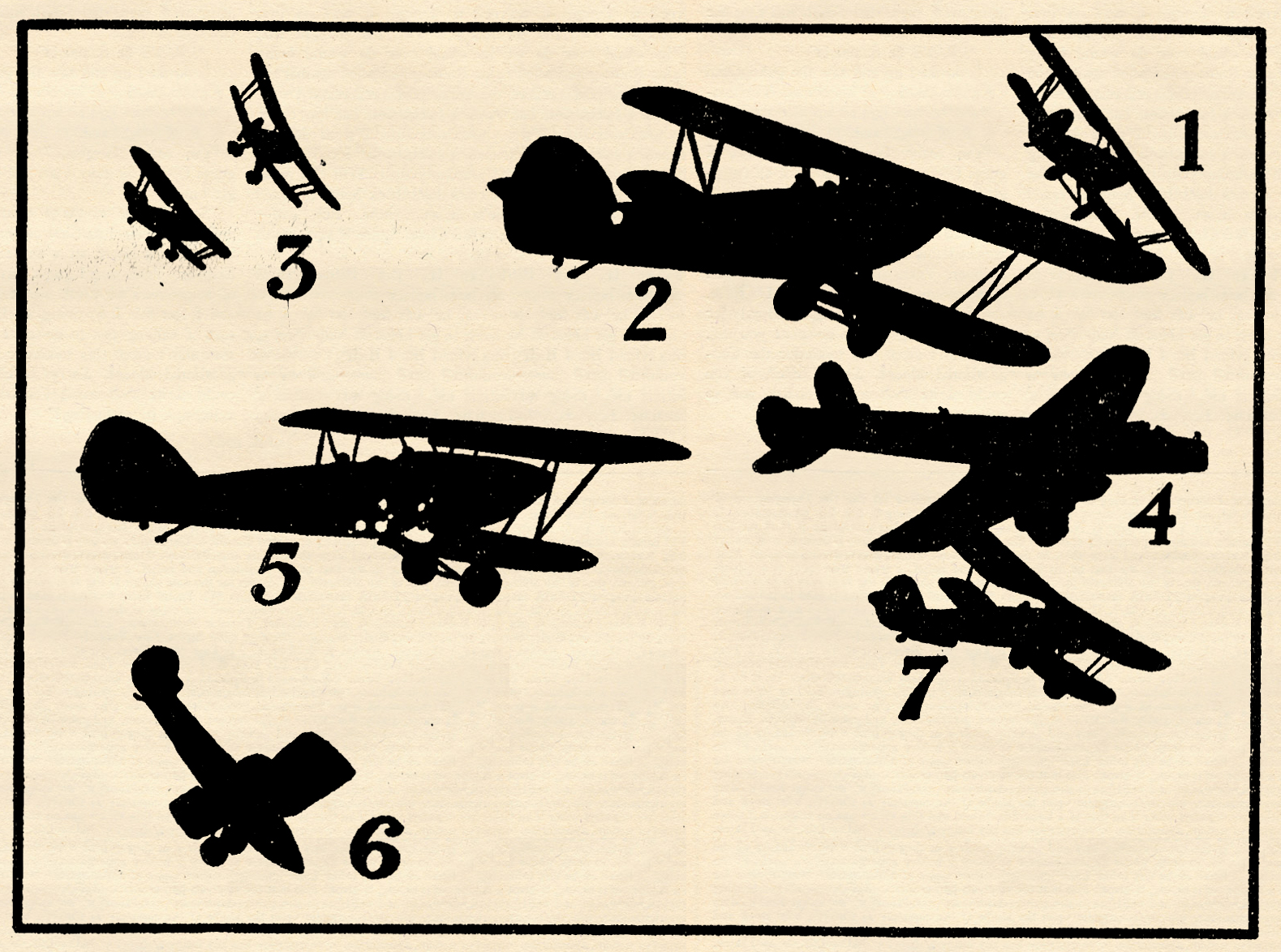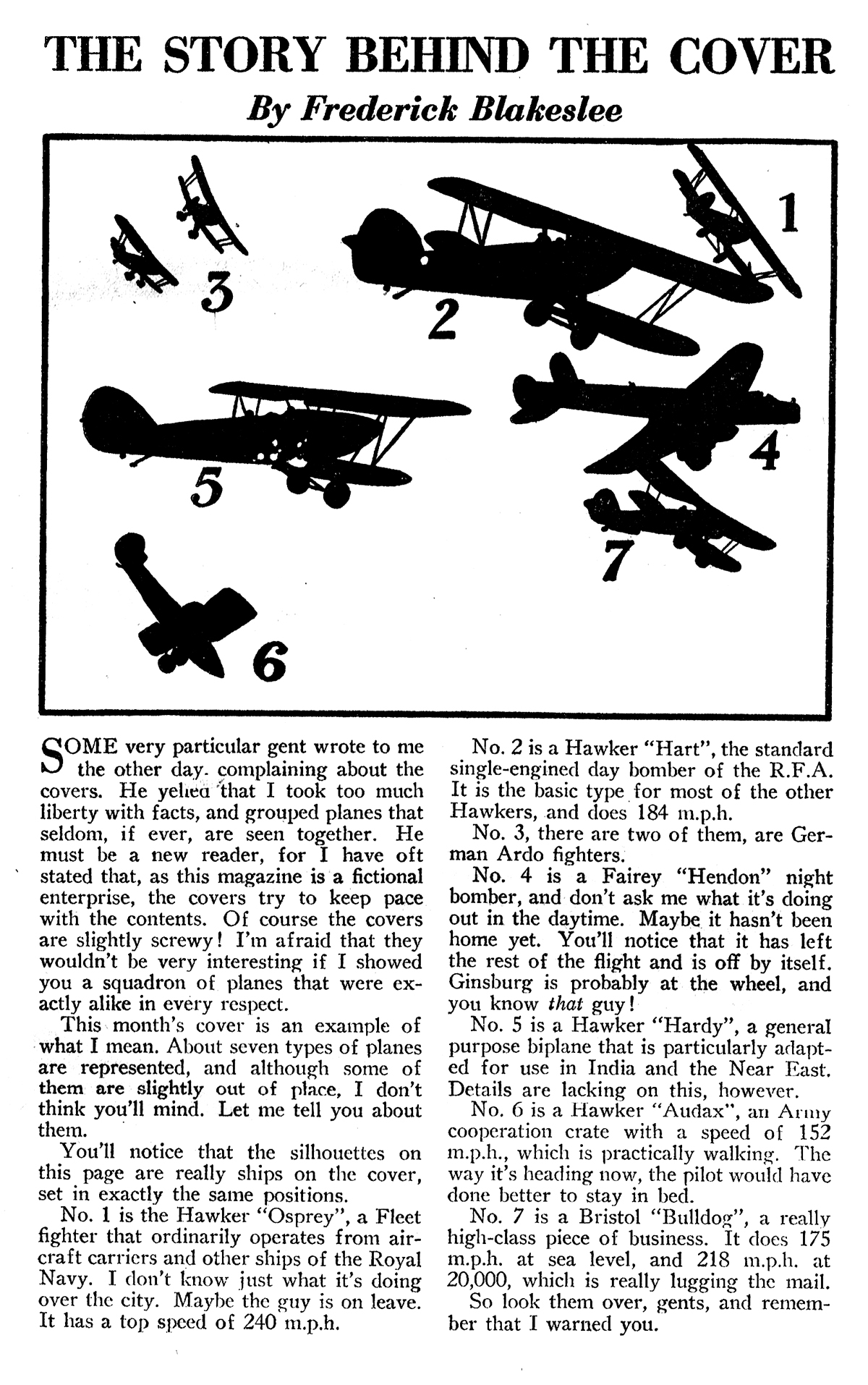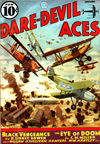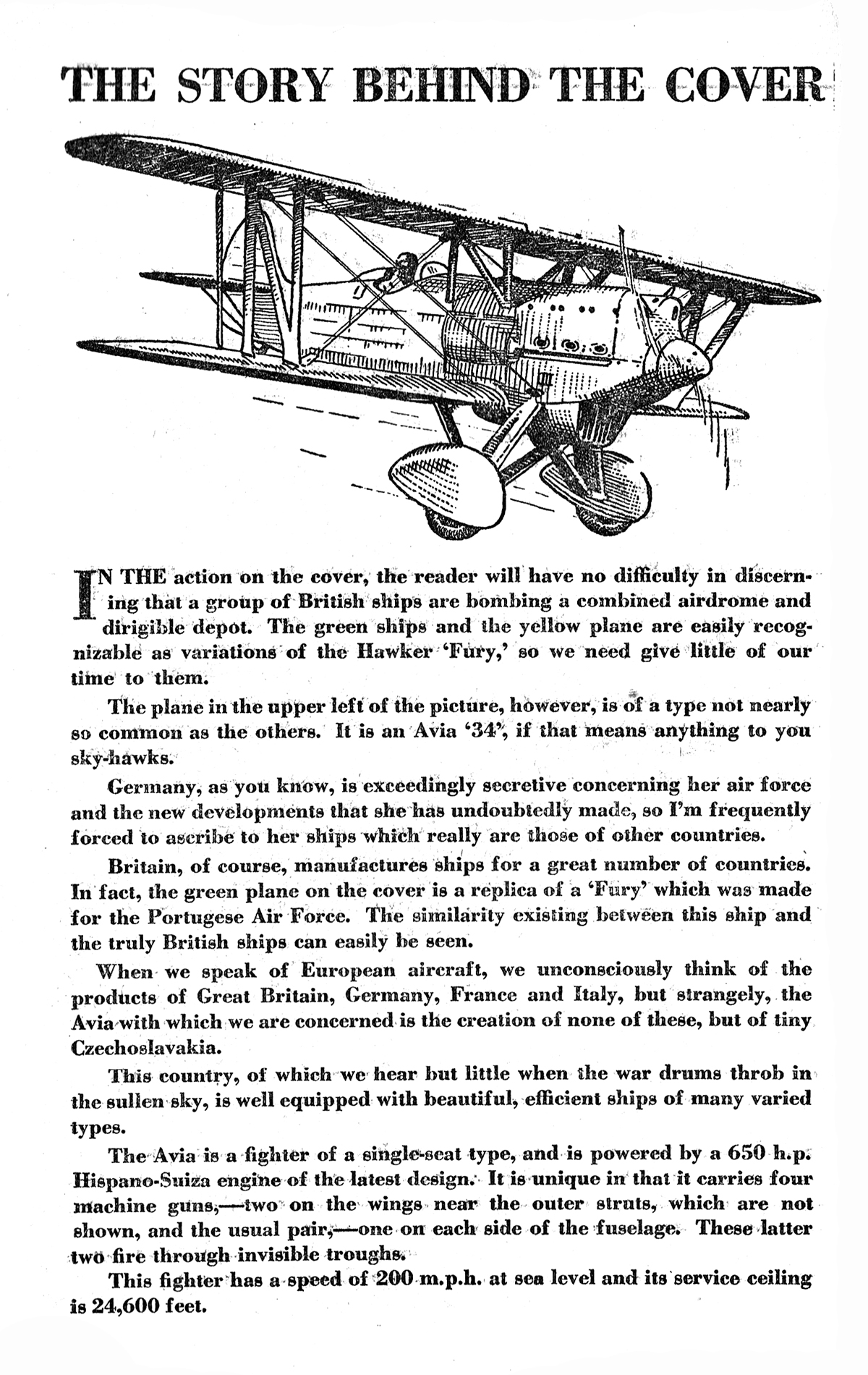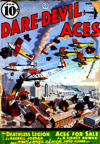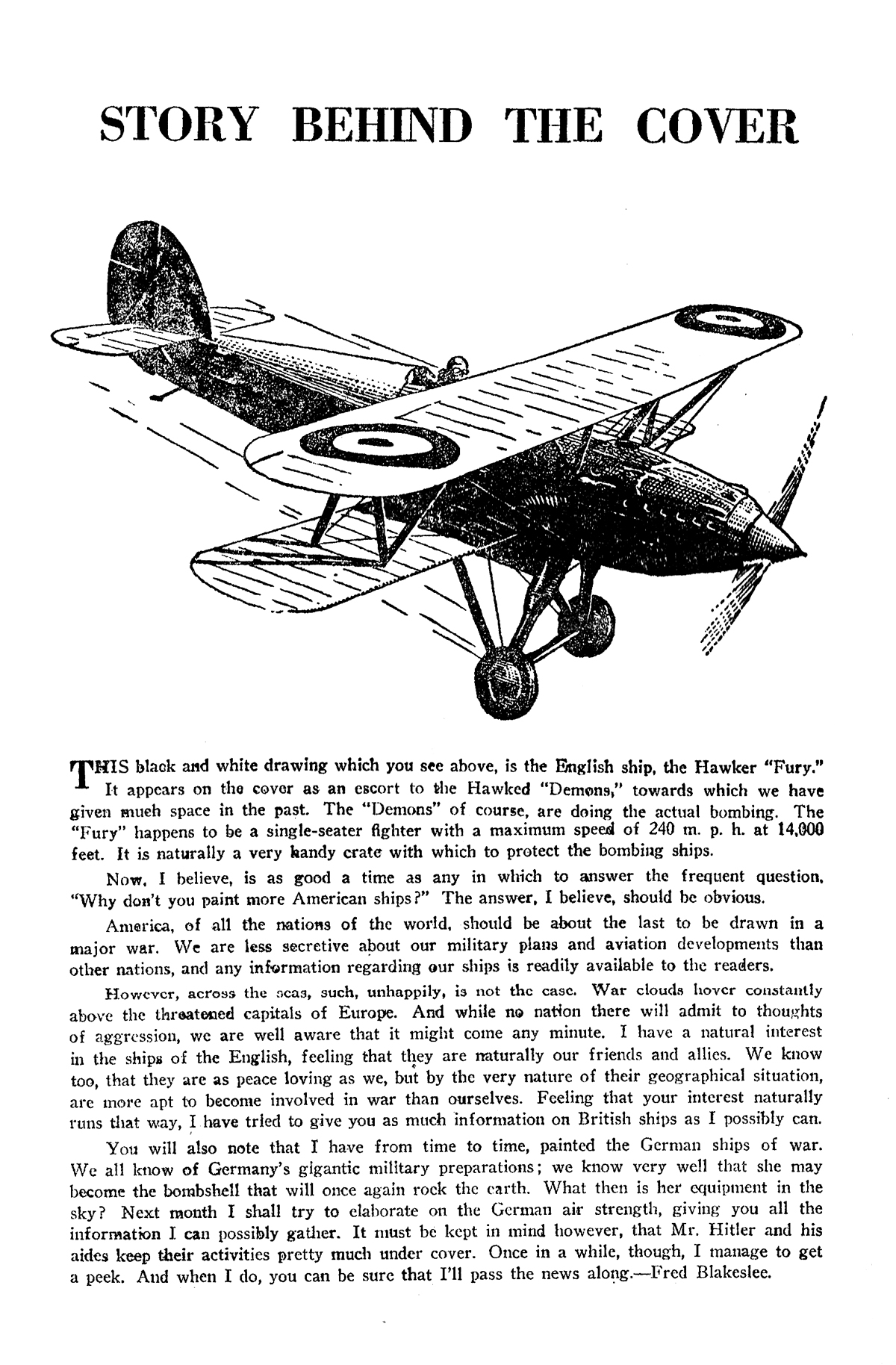“Flying Aces, August 1935″ by C.B. Mayshark
THIS May we are once again celebrating the genius that is C.B. Mayshark! Mayshark took over the covers duties on Flying Aces from Paul Bissell with the December 1934 issue and would continue to provide covers for the next year and a half until the June 1936 issue. While Bissell’s covers were frequently depictions of great moments in combat aviation from the Great War, Mayshark’s covers were often depictions of future aviation battles and planes—like the August 1935 cover where Mayshark gives us a glimpse into a future air attack on London!
London Under Air Attack
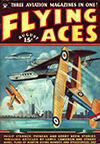 WAR! The word twangs a different chord in the heart of every man. To the Frenchman, it means a charge toward Paris—or Bayonet Trench outside Verdun. To the American, it means Chateau Thierry or the Argonne; to the Belgian, the remorse of Leige and the ravaging of a neutrality; to the Russian, the helpless swamps in front of the Masurian Lakes; to the Italian, the bloody Piave.
WAR! The word twangs a different chord in the heart of every man. To the Frenchman, it means a charge toward Paris—or Bayonet Trench outside Verdun. To the American, it means Chateau Thierry or the Argonne; to the Belgian, the remorse of Leige and the ravaging of a neutrality; to the Russian, the helpless swamps in front of the Masurian Lakes; to the Italian, the bloody Piave.
But to the average Englishman, whether he wore khaki or blue, war means air raids on London!
And well it might. When the news reached the trenches on that eventful day in 1915 that German airships had raided peaceful English towns on May 31st, raining incendiary and high-explosive shells on peaceful and unarmed British towns, the horror of war was probably first realized, after nearly a year of bitter fighting.
The English saw their kinfolk battered and mangled, buried under massive piles of masonry. Civilian names were listed in the casualty columns. From that day on, the Englishman knew he was in a war, and in retaliation, British airmen braved distance and bombed Karlsruhe. The French bombarded Baden. The British captured Kut-el-Amara and German South-West Africa. They raced across No-Man’s-Land and completed the capture of the area around Neuve Chapelle. They began a new march on the Dardanelles. And war today still means air raids on London.
The moment the German plans for a gigantic army and a great air force were announced, the British remembered the air raids of 1914-18. They set to work at once to strengthen the air defenses around London, the capitol of the Empire. Forty-one new squadrons were ordered, and recruiting for the R.A.F. leaped to amazing figures. Old flying men swarmed back to the colors. Youngsters hardly out of public school rallied to the call. Their England, which had once denied the charges that Germany was rearming, was threatened again, just as she was in 1914.
She would need more Warnefords, more Robinsons, more McCuddens, more Balls and more Mannocks. Some one had to face the foe which threatened again. No one ever knew the surge of air-mindedness that swept England last March. No one probably ever will. But the gauntlet, the flying glove, was taken up, and again England was ready.
But there is one difference. Germany knows today that she must never make the mistake she made in 1914 when she allowed England to get into a war. This time England must be shunted out of the picture early—just as Belgium was in the last war. The quickest and surest way to do it is by air. Germany’s vest-pocket Navy is no match for Britain’s might on the sea. Her army could never make a landing on British soil. But her air force, with high explosive, gas bombs and all forms of chemical warfare, might be able to stop Britain in her tracks before the English ground and sea forces could go into action.
Let us imagine that overnight Germany should decide to put the British out of any possible play. Her best bet would be a monster air raid on the main centers—London, Birmingham, Chatham, the naval base, Southampton, Dover and many other points of industrial strength—but mainly, of course, London. Here the raiders could sever the many cables of communication and the mighty seat of government—the point of power that controls the vast empire. Blotting out London with either high explosive or chemicals would have such a monstrous reaction, would be such a grim stroke at the morale of the nation, that it would take months to reorganize the intricate mechanism and put the nation back on its feet as an offensive power in a European conflict.
To do this, Germany naturally would have to employ ships capable of a wide cruising area and the carrying of great loads. These planes would require large crews to handle all the. intricate duties necessary in a mission of this kind. There would be two pilots, one navigation officer, one bombardier officer in charge of the bombing details, and at least two men to act as gunners in the defense.
A close examination of the available craft suitable for such a raid discloses that the famous Dornier Super-Wal four-engined flying boat would be the most likely choice. It has a wide cruising range, and is very seaworthy. With four 500-h.p. Jupiter VIII motors, (British, by the way) the Super-Wal has a top speed of 136 m.p.h. and carries a disposable load of 15,840 lbs. Imagine what a formation of twenty such ships could do, assuming they got through the London defenses!
Their equipment includes full night-flying instruments, two-way radio, a navigation compartment comparable to that in any Atlantic liner, and fuel tanks accommodating more than 1,000 gallons. Allowing a few hundred pounds for special armament in the way of high-caliber guns and modern air cannons, these ships could still deposit three-quarters of a ton of destruction and make a fast get-away.
The question naturally arises—what has England to offer in the way of defense against this type of raider?
The only thing worth mentioning, even with the vast improvement in all forms of anti-aircraft guns, is the modern intercepter. On this month’s cover, we have shown the form of defense employed by the British fighter squadrons using the Hawker Super-Fury fighter. Squadrons of these machines have been posted around the London defense area, and Britain believes that in them she has the answer to the air raid problem.
However, of all military machines, the intercepter fighter is probably the least understood, especially in countries where such a ship is not included in the air defense system. The Hawker Super-Fury, with the Rolls Royce “Goshawk†steam-cooled engine, is the most efficient type of intercepter in the world today. It has a top speed of 250 m.p.h. and is the fastest service machine in the world. Contrary to general impression, it is not a ship that can only get upstairs fast, and be confined to a small radius of action. Not at all! It climbs to 20,000 feet in about seven minutes, to be sure, but it can stay in the air well over two hours. It carries two Vickers guns of the new high-speed type, and is the safest bet in the swiftly forming defense against enemy raiders.
Thus, if a war should break out, you can bet your last dollar that Britain’s first line of defense would not be her Navy, but her air service. The Hawker-Fury pilots of the London defense area would have to take up the work where old No.39 Squadron, Home Defense, left off in 1918, in the last attempted raid on London. On that memorable occasion, they destroyed seven Gothas out of eleven that had crossed the British Coastline. What would be the record now?
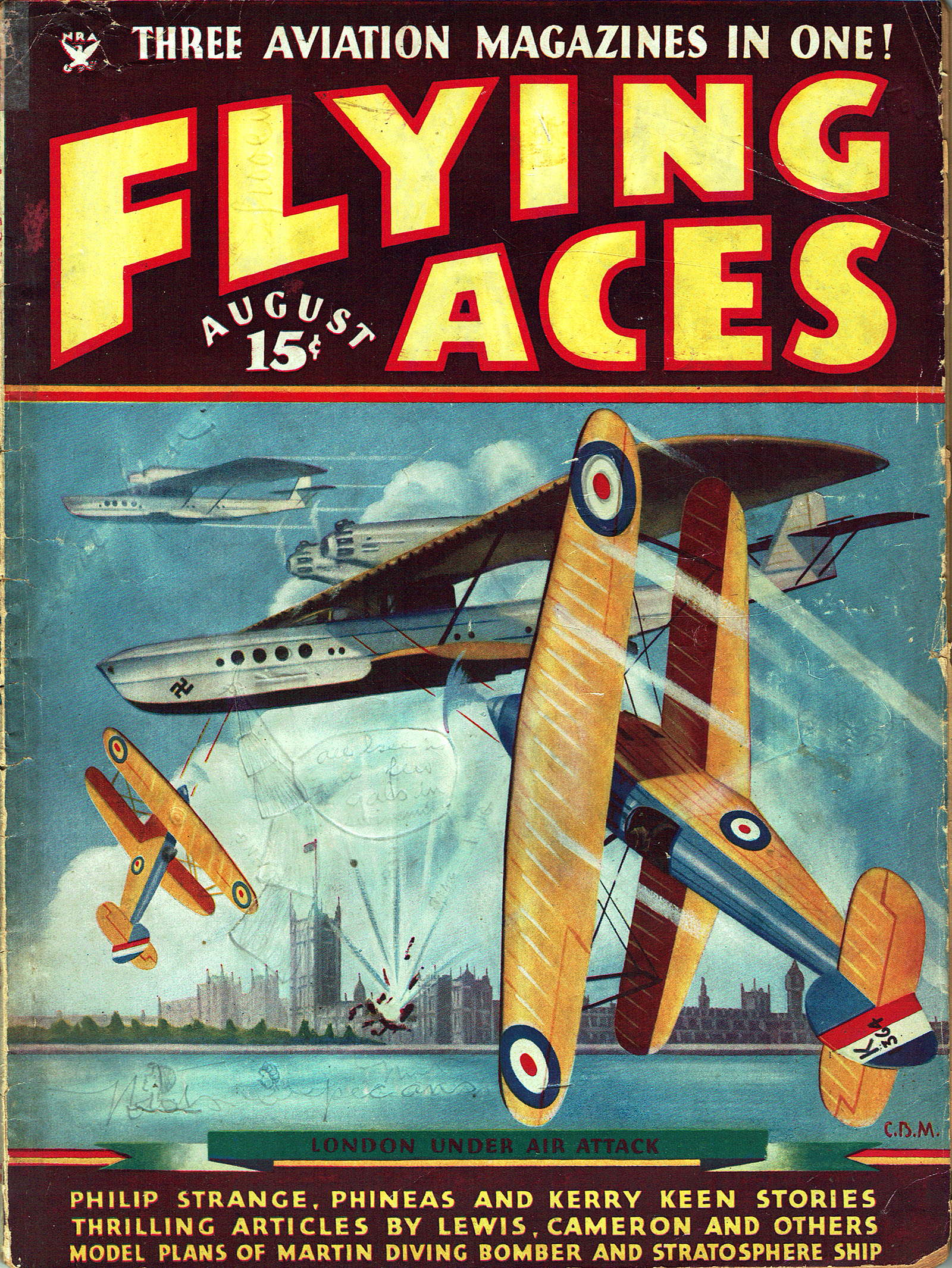
Flying Aces, August 1935 by C.B. Mayshark
London Under Air Attack: Thrilling Story Behind This Month’s Cover





